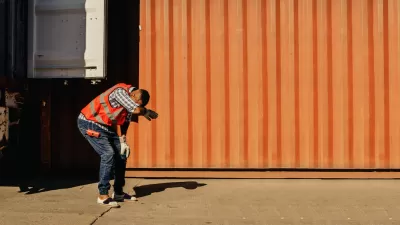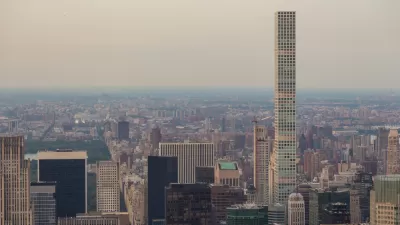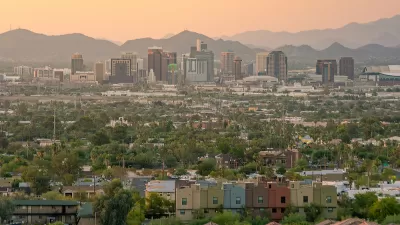This summer's heat waves wreaked havoc on physical infrastructure, but also highlighted vulnerabilities in our social support systems.

"In an era of escalating climate change," asserts Sarah Kaplan, "extreme heat is the United States’ most fatal form of weather disaster. Already this summer, hundreds of Americans have lost their lives amid a series of record-setting heat waves that scientists say would not have happened if not for human-caused warming." In Oregon and across the Pacific Northwest, "[r]oads have buckled, and train cables have melted. Emergency departments were overwhelmed."
In addition to physical infrastructure, officials "are realizing their social infrastructure is equally in need of repair. Long-standing inequities in housing and health care put the region’s poorest residents at greatest risk. Official warnings and government services didn’t reach those who most needed the help. Almost every victim of the heat wave died alone," Kaplan writes.
"When the heat dome scorched the state last month, Oregon did not have a heat early warning and response system, the gold standard for disaster planning. Residents in the typically temperate region didn’t know how to cope with extreme temperatures" and many didn't receive information about how to protect themselves.
"The most effective strategy for preventing heat deaths is direct outreach, experts say. After a brutal nine-day heat wave killed 118 people in Philadelphia in 1993, the city implemented one of the nation’s most robust heat response programs." Later, "[a] study by a team of Boston researchers found that the Philadelphia system averted an average of 45 deaths per year."
According to Gabriela Goldfarb, manager of the Oregon Health Authority (OHA)'s environmental public health section, "[p]reventing deaths during climate disasters is not just about emergency response, but rather "about building 'social resilience,' addressing the isolation and inequality that make people vulnerable in the first place" by reducing the effects of urban heat islands, expanding access to health care, and funding better outreach for marginalized communities.
FULL STORY: Heat waves are dangerous. Isolation and inequality make them deadly.

Americans May Be Stuck — But Why?
Americans are moving a lot less than they once did, and that is a problem. While Yoni Applebaum, in his highly-publicized article Stuck, gets the reasons badly wrong, it's still important to ask: why are we moving so much less than before?

Using Old Oil and Gas Wells for Green Energy Storage
Penn State researchers have found that repurposing abandoned oil and gas wells for geothermal-assisted compressed-air energy storage can boost efficiency, reduce environmental risks, and support clean energy and job transitions.

Placekeeping: Setting a New Precedent for City Planners
How a preservation-based approach to redevelopment and urban design can prevent displacement and honor legacy communities.

San Francisco’s Muni Ridership Grew in 2024
The system saw its highest ridership since before the Covid-19 pandemic, but faces a severe budget shortage in the coming year.

Colorado Lawmakers Move to Protect BRT Funding
In the face of potential federal funding cuts, CDOT leaders reasserted their commitment to planned bus rapid transit projects.

Safe Streets Funding in Jeopardy
The Trump administration is specifically targeting bike infrastructure and other road safety projects in its funding cuts.
Urban Design for Planners 1: Software Tools
This six-course series explores essential urban design concepts using open source software and equips planners with the tools they need to participate fully in the urban design process.
Planning for Universal Design
Learn the tools for implementing Universal Design in planning regulations.
Heyer Gruel & Associates PA
City of Moreno Valley
Institute for Housing and Urban Development Studies (IHS)
City of Grandview
Harvard GSD Executive Education
Salt Lake City
NYU Wagner Graduate School of Public Service
City of Cambridge, Maryland





























